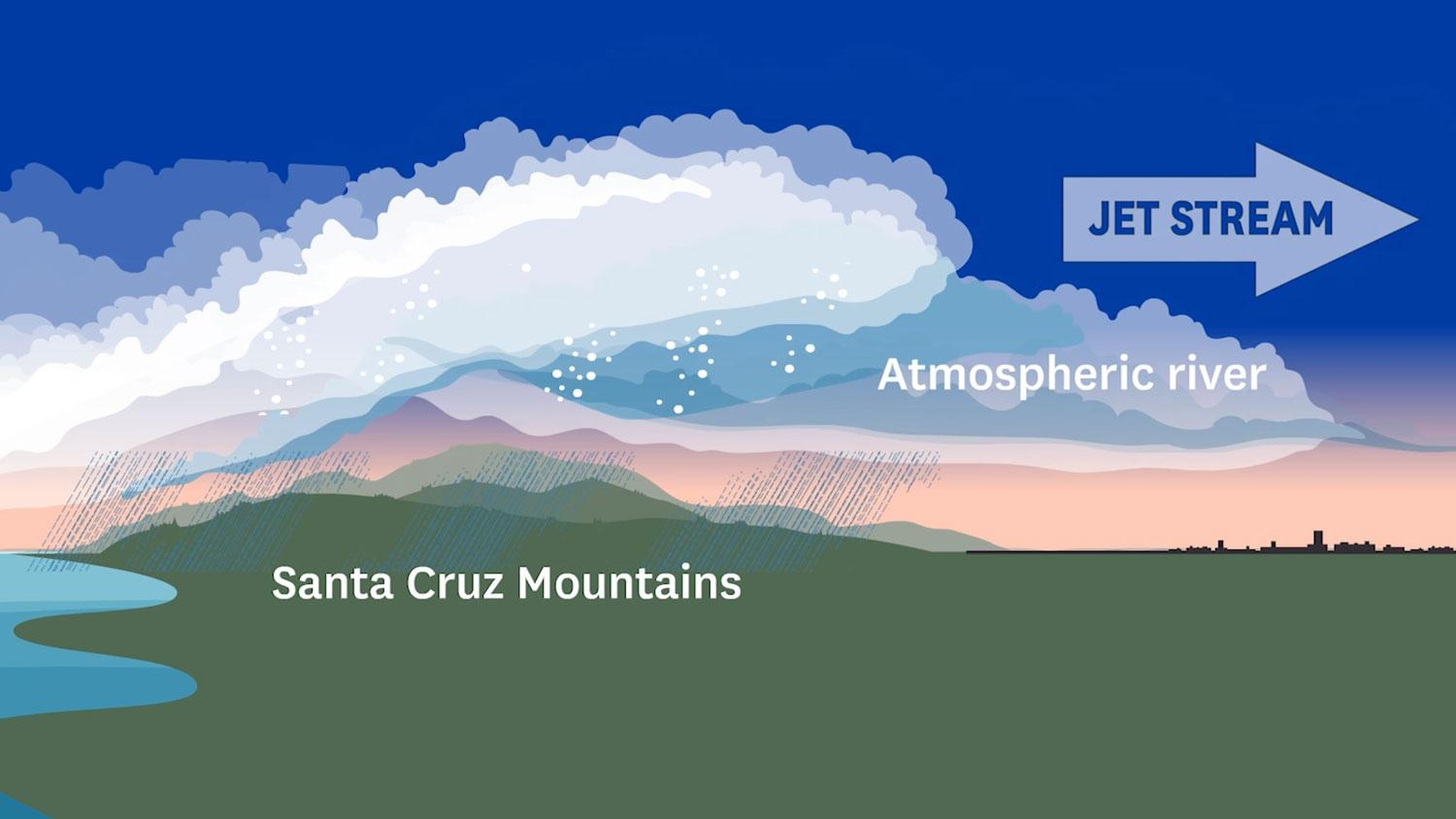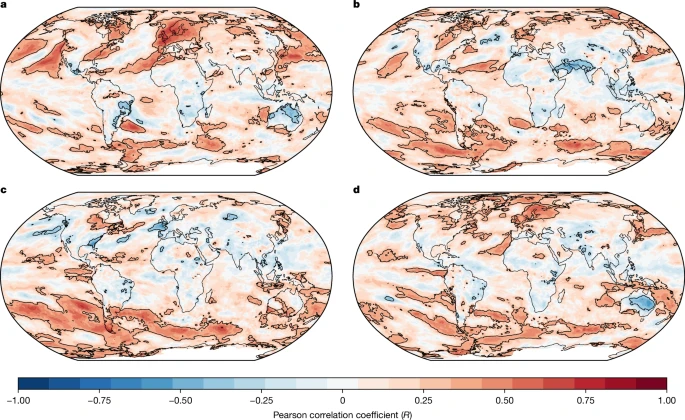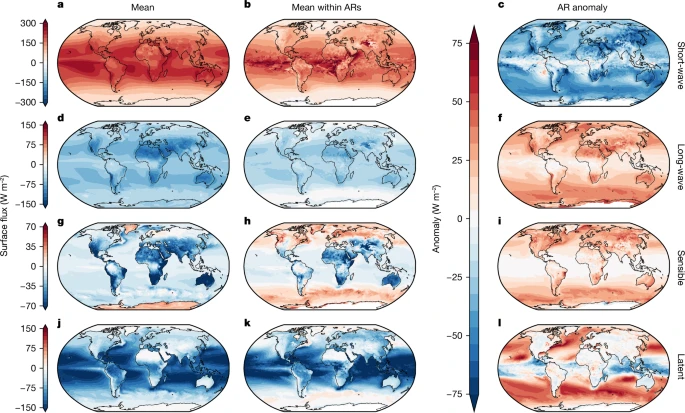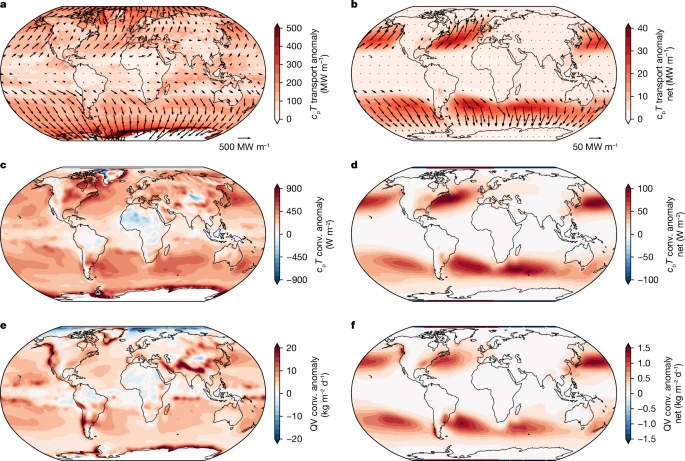文献阅读 250715-Atmospheric rivers cause warm winters and extreme heat events
Atmospheric rivers cause warm winters and extreme heat events
来自 <Atmospheric rivers cause warm winters and extreme heat events | Nature>
## Abstract:
- Definition:
Atmospheric rivers (ARs) are narrow regions of intense water vapour transport in the Earth’s atmosphere. These transient phenomena carry water from the subtropics to the mid-latitudes and polar regions, making up the majority of polewards moisture transport and exerting control on the precipitation and water resources in many regions.

- In addition to transporting moisture, ARs also transport heat, but the impact of this transport on global near-surface air temperatures has not yet been characterized.
- Results: show that seasons with more frequent ARs also have warmer than average temperatures in many mid-latitude regions, and that AR events are associated with temperature anomalies of 5–10 °C above the climatological mean.
- Mechanism: This is due to anomalous horizontal transport and convergence of sensible heat and moisture in the lower atmosphere, which increases both downward sensible heat flux and downwelling long-wave radiation at the surface.
## Intro:
Gaps:
- most AR studies focus on moisture transport and hydrologic impacts.
- Whereas there has been interest in characterizing the thermodynamic changes in AR intensity due to warming, only a handful of regional studies have explored temperatures and heat fluxes occurring within ARs in the mid-latitudes.
## Results:
Surface temperature anomalies during ARs
Atmospheric rivers are primarily mid-latitude phenomena, generally occurring along the major storm tracks in the North Atlantic, North Pacific and Southern Ocean. They are most frequent in the winter season, although there is significant geographic variation in seasonal intensity.
We find a strong correlation between AR frequency and average 2 m air temperatures in many mid-latitude regions, especially during the winter season (Fig. 1).
In boreal winter, the correlation coefficient (R) between seasonal mean AR frequency and seasonal mean temperature is above 0.6 in northern Europe, with almost all of Europe showing significant correlations (Fig. 1a).
Fig. 1: Seasonal mean temperatures are correlated with AR frequency across the mid-latitudes.

Temperature anomalies in the polar regions are very high in magnitude, but AR events rarely happen over these regions. The net effect of AR-associated temperature anomalies over time is therefore strongest over the North Atlantic storm track and the Indian Ocean sector of the Southern Ocean, where ARs are most frequent (Fig. 2b).
Fig. 2: ARs are associated with warm 2 m temperature anomalies.

AR-associated surface heat fluxes
Fig. 3: ARs are associated with anomalous downward sensible heat flux and long-wave radiation.

Horizontal transport of heat and moisture
Given that ARs are associated with net downward sensible heat flux in the mid-latitudes, we hypothesize that the warm near-surface air temperatures and anomalous downward sensible heat fluxes observed during AR events are related to anomalous horizontal transport and convergence of sensible heat in the lowest levels of the atmosphere. We therefore calculate anomalous horizontal transport and convergence of sensible heat within ARs at the lowest level in MERRA-2 (around 985 hPa or 110 m; Fig. 4).
Fig. 4: Anomalous horizontal heat transport and convergence occurs within ARs, along with anomalous moisture convergence.

